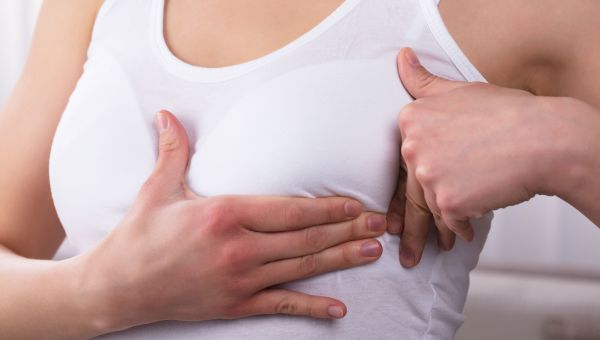Some breast tissue cells can undergo genetic changes and grow out of control, which leads to breast cancer. Many types of breast cancer exist and each may have unique symptoms. Signs differ widely, and some people don’t have early symptoms at all.
In the US, about 12.9% of cisgender women will receive a breast cancer diagnosis during their lifetime. There’s no guaranteed way to prevent the disease, but it is easier to treat if caught early. That means it’s vital to know the symptoms and pay attention to any changes.
You might notice changes during everyday routines like a shower. New guidelines from the U.S. Preventive Services Task Force (USPSTF) now recommend that women with average risk begin biennial screening mammograms every two years starting at age 40 up to age 74.
If your breast cancer risk is higher (due to family history, certain genetic mutations, prior chest radiation, or other health conditions), screening may need to start earlier.
Here are some common early signs of breast cancer. Trust your instincts, and reach out to a healthcare provider if anything feels off.
A New Breast Lump
- A lump in the breast, sometimes as tiny as a pea, is the most common early sign. Most breast lumps are not cancer, such as cysts or fibrocystic changes.
- Cancerous lumps are often painless and have irregular edges, though sometimes they can be tender or soft.
- A lump in the armpit might also indicate something concerning.
Changes in Breast Appearance
Some changes natural (aging, hormonal shifts, pregnancy), but others may signal trouble:
- Swelling of all or part of one breast
- Dimpling of the skin (orange-peel texture) — especially in inflammatory breast cancer
- Skin becoming thick, dry, flaky, or discolored
- An indentation or change in shape/size not explained by weight, medication, or natural fluctuations
Nipple Changes
- Inversion of the nipple (turning inward), which might happen naturally but should be monitored if new.
- Redness, crusting, or flaking of the nipple skin
- Unusual discharge (especially if bloody or not breast milk)
Breast Thickening or Pain
- Feeling of thickening or swelling in part or all of the breast.
- Pain can happen (especially around periods or with benign conditions), but if persistent or unexplained, it should be checked.
Why Early Detection Matters
- Early detection (before spread) means more treatment options, better outcomes, and higher survival rates.
- New USPSTF guidelines to start screening at age 40, every two years till 74, aim to catch cancers earlier.
- If you have high risk factors, your doctor may recommend screening earlier or more frequently.
Takeaway: Most changes in breast tissue are not cancer, but never ignore something unusual. If you notice a lump, change in appearance or pain, or any other persistent symptom, consult a healthcare provider right away. Early diagnosis saves lives.



